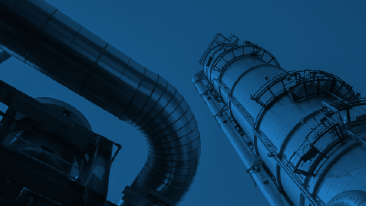A recent survey by AspenTech and Oil & Gas Journal found that 93 percent of engineering, procurement and construction (EPC) executives think that finding new sources of revenue from O&M is an important initiative.
In the current climate of fewer and smaller capital projects, the fact is almost all EPCs are looking for new areas of growth. Because there are so many more assets in operation than are currently being planned, designed or built, many firms are now targeting the operations and maintenance (O&M) phases of the asset lifecycle.
Specifically, the survey showed that the top focus areas for new revenue streams from O&M include:
-
Operational decision support
-
Dynamic modeling and operator training simulation (OTS)
-
Reliability
-
Energy management
-
Equipment monitoring
-
Updating models used in planning and scheduling
Here are six ways EPCs can leverage their existing modeling skills to enhance and optimize the operation of plants in these core areas and generate much-needed new revenues for their firms.
Use of Models for Operational Analysis & Decision Support
Model-based decision support leverages online and offline models to facilitate “what if” scenario planning, as well as unit monitoring and troubleshooting, to yield better results. Putting this information into a useful format and making it accessible to operators allows the improvement program to scale, resulting in faster and greater return on investment for the asset owner.
The role of the EPC is to update design models, incorporating any upgrades and repairs and to use actual operational data to tune models to reflect real operating conditions. Use of models to inform operations and maintenance can help you differentiate yourself in a highly competitive business environment. It’s also increasingly important to operators as older, experienced personnel leave the workforce.
Dynamic Modeling for Operator Training & APC
Commissioning and startup delays often frustrate operators and can cost millions in lost revenue. Unforeseen conditions, unplanned incidents and inexperienced personnel can all contribute to problems and delays. Delivering an operator training simulation (OTS) system can help provide a smoother plant startup and speed time to revenue for both you and your customer.
Use your dynamic modeling expertise and best-in-class OTS software for the fastest path to commissioning and operations. Keeping the OTS model up-to-date can also help you stay close to your customers, while improving both safety and operator effectiveness.
Another downstream use of both steady-state and dynamic models is to improve the workflow of developing and deploying advanced process control (APC). Process models developed during the design phase can serve to define the APC control strategy and to obtain “seed” models for calibrating the controller online. Validated dynamic models can further be employed by process engineers for enhanced operational decision support.
Reliability, Availability & Maintainability
When it comes to optimizing a maintenance program, today’s plants are just too complex to for intuitive, isolated decision-making. Sophisticated modeling capabilities, often the domain of the EPCs, are required for creating and updating the process, equipment and reliability models as assets are repaired, maintained and upgraded.
Use these models for enhanced decision support, or combine them with actual plant operating data and analytics to provide value-adding analysis and recommendations to your operator to help optimize their maintenance plans.
Energy Management Services
According to Hydrocarbon Engineering, energy costs for operating a typical refinery can exceed $50 million USD annually, accounting for half of the non-feedstock operating budget.
Creating a model of the plant’s utility system and connecting it to plant operating data can provide required guidance to achieve the lowest operating costs while meeting reliability targets and profits. Often, the operator lacks the modelling skills and tools necessary to achieve the optimal economic operation of the facility. The opportunity for the EPCs is to leverage their skills and tools to help the operator unlock 2-5 percent energy savings.
Equipment Performance Monitoring
Fouling of exchangers in the refinery preheat train alone is estimated to cost operators $4.5 billion USD per year. EPC firms can leverage modeling to predict fouling levels over time and recommend optimized cleaning schedules that can save operators millions.
Another critical piece of equipment for monitoring and optimizing is the distillation column. Use your modeling skills to help find optimal configurations that allow for operation closer to constraints — thereby increasing capacity while still meeting product specifications. You can help determine the root cause of operational issues such as excessive column weeping and flooding without a disruptive and expensive physical inspection of the column.
Planning Model Updates
Many process plants operate in markets where demand for end products and available feedstock supplies both fluctuate. To deal with these changing market conditions plant operators use sophisticated planning and scheduling software to optimize their production plans. Changing feedstocks and outputs means that plant operating conditions will also fluctuate and operators must ensure that their existing infrastructure can handle new feedstocks. Models used for planning and scheduling must be updated to support optimized production planning.
EPCs can help owners better optimize production plans by keeping the models used in planning up to date. By using process models that incorporate actual operating conditions, operators will get more accurate results for planning and scheduling, which is critical to achieving a higher return on their assets. Refinery-wide modeling is also an opportunity for EPCs, who can help guide their customers in developing new strategic plans inclusive of CAPEX upgrades to capitalize on broader market dynamics.
Summary
Throughput, quality and safety are critical initiatives for the operators. Put your existing modeling capabilities to work to help your customers make better operating decisions, train and maintain an effective workforce and minimize unplanned downtime.
By using online and offline models, powerful OTS and predictive maintenance software, and plant data, you can add significant value to your customers and drive new revenues for your firm at the same time. You can also stay closer to operators and better position your firm to win new CAPEX work at existing and new facilities.
To learn more about these challenges and how AspenTech can help you find new sources of revenue from operations, register for our upcoming webinar.




Leave A Comment